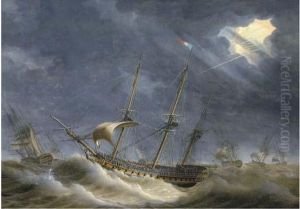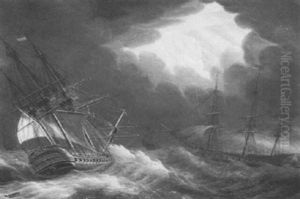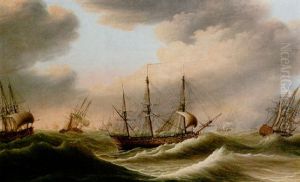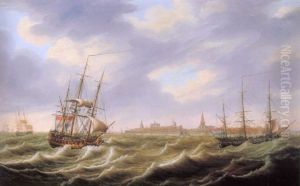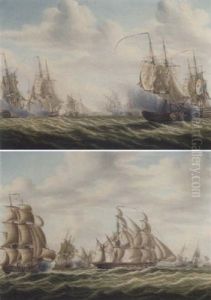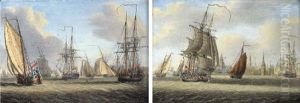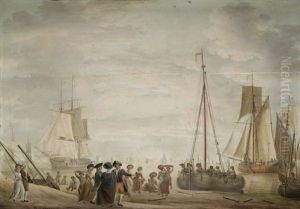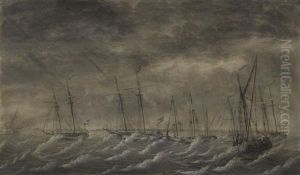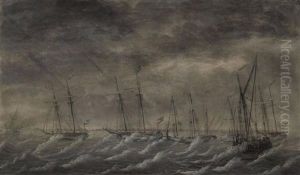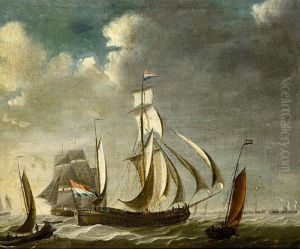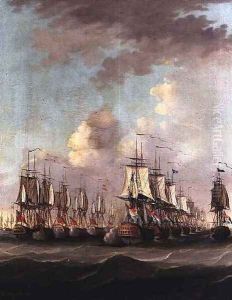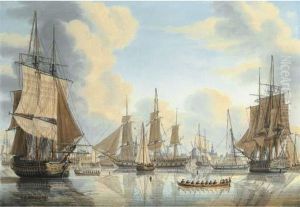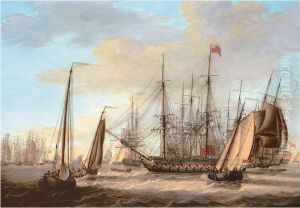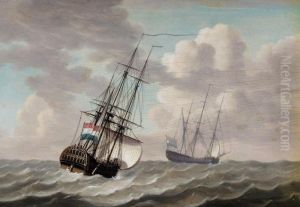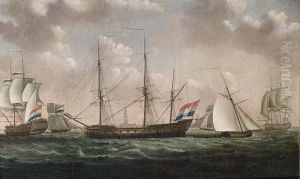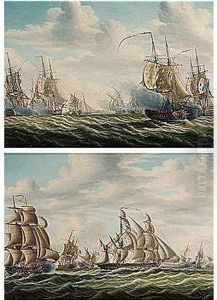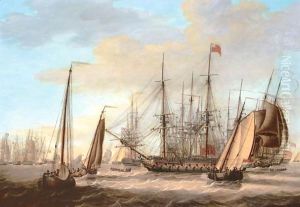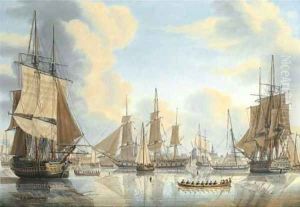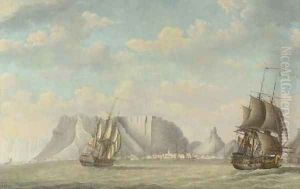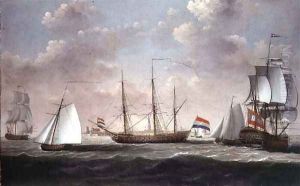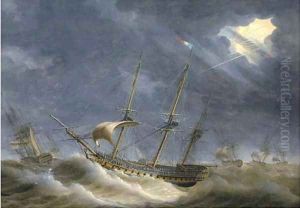Engel Hoogerheyden Paintings
Engel Hoogerheyden was a notable figure in the 18th-century Dutch art scene, remembered primarily for his detailed and atmospheric cityscapes and landscapes. Born in 1740, Hoogerheyden's early life is shrouded in some mystery, as detailed records of his early training and influences are scarce. However, it is known that he was active in the Dutch city of Rotterdam, where he spent most of his career.
Hoogerheyden's work is characterized by its meticulous attention to detail and the skillful use of light and shadow, which brought his depictions of urban and rural scenes to life. His paintings often capture the dynamic interplay between the natural and built environments, offering viewers a glimpse into the Dutch landscape of his time. Despite the prominence of landscape and cityscape art in the Netherlands during this period, Hoogerheyden's unique approach and perspective set his work apart.
Throughout his career, Hoogerheyden enjoyed the patronage of various Dutch merchants and nobility, who commissioned his works for their personal collections. His paintings were celebrated for their realism and depth, qualities that made him a respected figure among his contemporaries.
Hoogerheyden's contribution to Dutch art was significant, yet he remains a somewhat underappreciated artist outside of specialist circles. His death in 1807 marked the end of a career that had spanned several decades, during which he had created a body of work that continues to be studied and admired for its technical skill and aesthetic beauty.
Despite the lack of widespread recognition, Engel Hoogerheyden's paintings are valuable assets to the collections in which they reside, offering insight into the Dutch Golden Age's lasting influence on the landscape and cityscape genres. His legacy is preserved in the museums and galleries that house his works, as well as in the academic research that continues to explore his contribution to the world of art.
